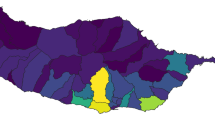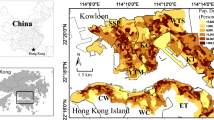Abstract
The purpose of the paper is to provide innovative emerging technology framework for community to combat epidemic situations. The paper proposes a unique outbreak response system framework based on artificial intelligence and edge computing for citizen centric services to help track and trace people eluding safety policies like mask detection and social distancing measure in public or workplace setup. The framework further provides implementation guideline in industrial setup as well for governance and contact tracing tasks. The adoption will thus lead in smart city planning and development focusing on citizen health systems contributing to improved quality of life. The conceptual framework presented is validated through quantitative data analysis via secondary data collection from researcher’s public websites, GitHub repositories and renowned journals and further benchmarking were conducted for experimental results in Microsoft Azure cloud environment. The study includes selective AI models for benchmark analysis and were assessed on performance and accuracy in edge computing environment for large-scale societal setup. Overall YOLO model outperforms in object detection task and is faster enough for mask detection and HRNetV2 outperform semantic segmentation problem applied to solve social distancing task in AI-Edge inferencing environmental setup. The paper proposes new Edge-AI algorithm for building technology-oriented solutions for detecting mask in human movement and social distance. The paper enriches the technological advancement in artificial intelligence and edge computing applied to problems in society and healthcare systems. The framework further equips government agency, system providers to design and construct technology-oriented models in community setup to increase the quality of life using emerging technologies into smart urban environments.














Similar content being viewed by others
Explore related subjects
Discover the latest articles and news from researchers in related subjects, suggested using machine learning.Data Availability
The datasets generated during and/or analyzed during the current study are available in the relevant academic repository hosted by Oxford and Standford, https://exposing.ai/oxford_town_centre/ and https://cs.stanford.edu/~roozbeh/pascal-context/.
References
Wang Q, Yu C. The role of masks and respiratory protection against SARS-CoV-2. Infect Control Hosp Epidemiol. 2020. https://doi.org/10.1017/ice.2020.83.
Howard J, Huang A, Li Z, Tufekci Z, Zdimal V, van der Westhuizen HM, von Delft A, Price A, Fridman L, Tang LH, Tang V, Watson GL, Bax CE, Shaikh R, Questier F, Hernandez D, Chu LF, Ramirez CM, Rimoin AW. An evidence review of face masks against COVID-19. In: Proceedings of the National Academy of Sciences of the United States of America. 2021;118(4):e2014564118. https://doi.org/10.1073/pnas.2014564118.
Semple S, Cherrie JW. Covid-19: protecting worker health. Ann Work Expo Health. 2020. https://doi.org/10.1093/annweh/wxaa033.
Bedford J, Enria D, Giesecke J, Heymann DL, Ihekweazu C, Kobinger G, et al. COVID-19: towards controlling of a pandemic. Lancet. 2020;395(10229):1015–8.
Srivastava PR, Sengupta K, Kumar A, Biswas B, Ishizaka A. Post-epidemic factors influencing customer’s booking intent for a hotel or leisure spot: an empirical study. J Enterp Inf Manag. 2021. https://doi.org/10.1108/JEIM-03-2021-0137.
Greenhalgh T, Schmid MB, Czypionka T, Bassler D, Gruer L. Face masks for the public during the COVID-19 crisis. BMJ. 2020;369:m1435. https://doi.org/10.1136/bmj.m1435.
Jefferson T, et al. Physical interventions to interrupt or reduce the spread of respiratory viruses. The Cochrane Database Syst Rev. 2011.
Siddikur Rahman Md, Peeri NC, Shrestha N, Zaki R, Haque U, Hamid SHA. Defending against the Novel Coronavirus (COVID-19) out-break: how can the internet of things (IoT) help to save the world? Health Policy Technol. 2020. https://doi.org/10.1016/j.hlpt.2020.04.005.
Bibi SE, Krogstie J. Smart, sustainable cities of the future: an extensive interdisciplinary literature review. Sustain Cities Soc. 2017;2017(31):183–212.
Fernandes N. Economic effects of coronavirus outbreak (COVID-19) on the world economy (March 22, 2020). 2020. https://doi.org/10.2139/ssrn.3557504.
Sengupta K, Srivastava PR. Quantum algorithm for quicker clinical prognostic analysis: an application and experimental study using CT scan images of COVID-19 patients. BMC Med Inform Decis Mak. 2021;21:227. https://doi.org/10.1186/s12911-021-01588-6.
Keeling MJ, Hollingsworth TD, Read JM. Efficacy of contact tracing for the containment of the 2019 novel coronavirus (COVID-19). J Epidemiol Community Health 2020;74:861–866.
Correia S, Luck S, Verner E. Pandemics depress the economy; public health interventions do not: evidence from the 1918 flu. Mimeo. 2020.
Wittkowski K. The first three months of the COVID-19 epidemic: Epidemiological evidence for two separate strains of SARS-CoV-2 viruses spreading and implications for prevention strategies. 2020. https://doi.org/10.1101/2020.03.28.20036715.
Kissler SM, Tedijanto C, Goldstein E, Grad YH, Lipsitch M. Projecting the transmission dynamics of SARSCoV-2 through the postpandemic period. Science (New York, N.Y.), 2020;368(6493):860–868. https://doi.org/10.1126/science.abb5793.
Nicola M, Alsafi Z, Sohrabi C, Kerwan A, Al-Jabir A, Iosifidis C. et al. The socio-economic implications of the coronavirus pandemic (COVID-19): A review. Int J Surg 2021;78:185–193. https://doi.org/10.1016/j.ijsu.2020.04.018.
Ting DSW, Carin L, Dzau V, et al. Digital technology and COVID-19. Nat Med. 2020;26:459–61. https://doi.org/10.1038/s41591-020-0824-5.
Statista (2020) COVID-19/coronavirus. Accessed 31 Mar 2020.
Gaines-Ross L. “Reputation Warfare”. Harvard Bus Rev. 2010;88(12):70–76.
Anderson R, Heesterbeek H, Klinkenberg D, Hollingsworth T. How will country-based mitigation measures influence the course of the COVID-19 epidemic?. Lancet. 2020;395(10228):931–934. https://doi.org/10.1016/s0140-6736(20)30567-5.
Leung NHL, et al. Respiratory virus shedding in exhaled breath and efficacy of face masks. Nat Med. 2020. https://doi.org/10.1038/s41591-020-0843-2.
Gilbert M, Dewatripont M, Muraille E. et al. Preparing for a responsible lockdown exit strategy. Nat Med. 2020;26:643–644. https://doi.org/10.1038/s41591-020-0871-y.
Chen H, Yang B, Pei H, Liu J. Next generation technology for epidemic prevention and control: data-driven contact tracking. IEEE Access. 2019;7:2633–42. https://doi.org/10.1109/ACCESS.2018.2882915.
Ananthanarayanan G, Bahl V, Cox L, Crown A, Nogbahi S, Shu Y. Demo: video analytics - killer app for edge computing. In: The 17th annual international conference on mobile systems, applications, and services (MobiSys’19), 17–21 Jun 2019, Seoul, Republic of Korea. ACM, New York, NY, USA. https://doi.org/10.1145/3307334.3328589.
Satyanarayanan M, Simoens P, Xiao Y, Pillai P, Chen Z, Ha K, Hu W, Amos B. Edge analytics in the internet of things. IEEE Pervas Comp. 2015;14:24–31.
Shi W, Cao J, Zhang Q, Li Y, Xu L. Edge computing: vision and challenges. IEEE Internet Things J. 2016;3:637–46.
Ganansia F, Carincotte C, Descamps A, Chaudy C. A promising approach to people flows assessment in railway stations using standard CCTV networks. In: Proceedings of the transport research arena (TRA) 5th conference: transport solutions from research to deployment, Paris, France, 14–17 Apr 2014.
Ray P. A survey on Internet of Things architectures. J King Saud Univ Comput Inf Sci 30(3):291-319. https://doi.org/10.1016/j.jksuci.2016.10.003
Hui G. How the internet of things changes business models. Harvard Bus Rev. 2014;95:1–5.
Zhao ZQ, Zheng P, Xu T, Wu X. “Object Detection With Deep Learning: A Review,” in IEEE Transactions on Neural Networks and Learning Systems. 2019. vol. 30, no. 11, pp. 3212–3232. https://doi.org/10.1109/TNNLS.2018.2876865.
Uijlings JRR, van de Sande KEA, Gevers T. et al. Selective Search for Object Recognition. Int J Comput Vis. 2013;104:154–171. https://doi.org/10.1007/s11263-013-0620-5.
Sun K, Xiao B, Liu D, Wang J. Deep High-Resolution Representation Learning for Human Pose Estimation. 2019 IEEE/CVF Conference on Computer Vision and Pattern Recognition (CVPR). 2019. pp. 5686-5696. https://doi.org/10.1109/CVPR.2019.00584.
Chen K, Wang J, Pang J, et al. MMDetection: open MMLab detection toolbox and benchmark. https://arxiv.org/abs/1906.07155. 2019.
Porumbel D, Hao J, Kuntz P. An efficient algorithm for computing the distance between close partitions. Discrete Appl Math 2011;159(1):53-59. https://doi.org/10.1016/j.dam.2010.09.002
Goffman E. Gender advertisements. New York: Macmillan International Higher Education; 1976.
Aiello AE, Perez V, Coulborn RM, Davis BM, Uddin M, Monto AS. Facemasks, Hand Hygiene, and Influenza among Young Adults: A Randomized Intervention Trial. PLoS ONE. 2012;7(1):e29744. https://doi.org/10.1371/journal.pone.0029744.
Xi N, Ma D, Liou M, Steinert-Threlkeld ZC, Anastasopoulos J, Joo J. Understanding the political ideology of legislators from social media images. 2019. https://arxiv.org/abs/1907.09594. Accessed 10 Oct 2020.
Duguid J. The size and the duration of air-carriage of respiratory droplets and droplet-nuclei. Epidemiol Infect. 1946;44:471–9.
Becker HS. Photography and sociology. Stud Vis Commun. 1974;1(1):3–26.
Ferree MM, Hall EJ. Visual images of American Society: gender and race in introductory sociology textbooks. Gend Soc. 1990;4(4):500–33.
Crawford K, Paglen T. Excavating AI: the politics of images in machine learning training sets. Ai & Society. 2021;1–12.
Alghamdi A. Impact of the COVID-19 pandemic on the social and educational aspects of Saudi university students’ lives. PLoS One. 2021;16(4): e0250026. https://doi.org/10.1371/journal.pone.0250026.
Keniya R, Mehendale N. Real-time social distancing detector using social distancing net-19 deep learning network. 2020. https://doi.org/10.2139/ssrn.3669311. SSRN: https://ssrn.com/abstract=3669311. Accessed 7 Aug 2020.
Yadav S. Deep learning based safe social distancing and face mask detection in public areas for COVID-19 safety guidelines adherence. Int J Res. Appl Sci Eng Technol. 2020;8(7):1368–1375.
Anfinrud P, Bax C, Stadnytskyi V, Bax A. Could SARS-CoV-2 be transmitted via speech droplets? (2020). https://doi.org/10.1101/2020.04.02.20051177.
Redmon J, Divvala S, Girshick R, Farhadi A. “You Only Look Once: Unified, Real-Time Object Detection,” 2016 IEEE Conference on Computer Vision and Pattern Recognition (CVPR), (2016). pp. 779–788. https://doi.org/10.1109/CVPR.2016.91.
Author information
Authors and Affiliations
Corresponding author
Ethics declarations
Conflict of interest
The authors declare that they have no conflict of interest. The Intellectual property rights remains with Microsoft Corporation.
Additional information
Publisher's Note
Springer Nature remains neutral with regard to jurisdictional claims in published maps and institutional affiliations.
This article is part of the topical collection “Advances in Computational Approaches for Artificial Intelligence, Image Processing, IoT and Cloud Applications” guest edited by Bhanu Prakash K. N. and M. Shivakumar.
Appendix 1: Terminology Classification
Appendix 1: Terminology Classification
CNN: convolutional neural network | FPGA: field programmable gate array |
R-CNN: regions with CNN features | YOLO: you only look once; an object detection system trained on COCO dataset |
HRNet: high-resolution networks | mPA: mean average precision |
COCO: common objects in context | FPS: frames per second |
GPU: graphical processing unit | TP/TN: true positive/true negative |
SGD: stochastic gradient descent | DL: deep learning |
IoT: internet of things | PASCAL: pattern analysis statistical modeling and computational learning |
FPS: frames per second | VOC: visual object classes |
Rights and permissions
About this article
Cite this article
Sengupta, K., Srivastava, P.R. HRNET: AI-on-Edge for Mask Detection and Social Distancing Calculation. SN COMPUT. SCI. 3, 157 (2022). https://doi.org/10.1007/s42979-022-01023-1
Received:
Accepted:
Published:
DOI: https://doi.org/10.1007/s42979-022-01023-1




